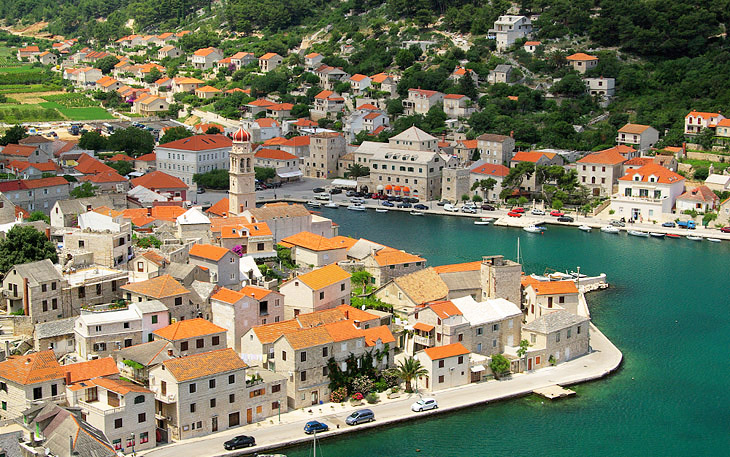

You may not know this, but the White House on Pennsylvania Avenue, Washington D.C., was partly built of this stone as pure as you can imagine it. It is likely that the residence of US presidents erected at the end of the 18th century, today containing 35 bathrooms, 28 fireplaces, a fallout shelter as well as other conveniences of the modern age, actually owes its poetic name to several impressive quarries in the middle of an incredibly turquoise sea than belonging to the Austrian Empire.
Another version claims that the famous residence in Northern America was initially called the "President's House". It was only Theodore Roosevelt who officially named it the "White House" a hundred years later, in 1901. In the meantime, during an unfortunate historical period of armed confrontations, there was an unsuccessful attempt to level the whole capital of the States by fire including the presidential residence. By a mysterious coincidence, the soldiers finally abandoned their efforts and the building did not completely burn down. It was only turned black from the smoke and fire damage. So, after the war the president's house was painted white, and people started calling it the “White House”.
In fact, Washington is not the only city that got the idea to build a public building of white limestone from the island of Brač. Parliaments in both Vienna and Budapest - capitals of Austrian and Hungarian parts of the Habsburg Monarchy - also opted for the same building material. Magnificent snow white palaces in Venice, Italy, resist the sea until today. Roman Emperor Diocletian was admiring the white stone of Brač already 1700 years ago and thereafter ordered a construction of his palace and military fortress on the Dalmatian coast. That is how today's second-largest Croatian city of Split was founded.
A unique stonemason high school was eventually opened on the island at the beginning of the last century. Traditionally, the stone blocks have been extracted by saw instead of using dynamite since the limestone is easily workable. It is therefore suitable for the finest stonework. Even today, the students use manually powered tools like they would have centuries ago. The school educates each year a full class of highly skilled artisans ready to perform the arduous stone craftsmanship or continue their studies in architecture and other creative fields.
If you would like to learn how to carve stone, summer classes are possible for interested tourists.